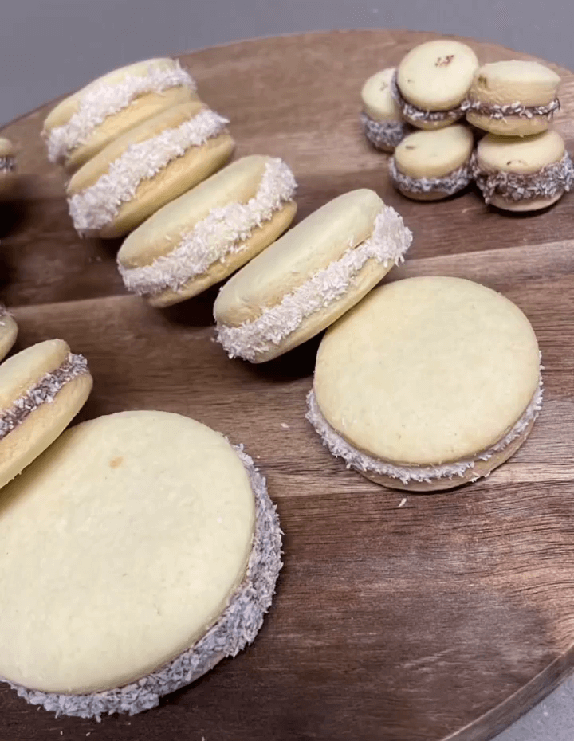Soft Homemade Alfajores
We may earn a commission from recommended products, at no extra cost to you. See Disclosure.
INGREDIENTS
- Milk jam (you can also use Kinder Bueno White and
- Nutella)
- Coconut flakes
Dough:
- 7 ounces/200 grams butter
- 2 cups/250 grams cornstarch
- 1¼ cups/150 grams powdered sugar
- 1⅔ cups/210 grams flour
- 1 teaspoon/4 grams baking soda
- 4 egg yolks
INSTRUCTIONS
- In a stand mixer, combine the butter and powdered sugar using the flat beater attachment. Add the cornstarch, flour, and baking soda, mixing until you achieve a crumbly texture as demonstrated in the video. Incorporate the egg yolks and blend until the dough forms (avoid overmixing after adding the yolks to maintain crispiness). Divide the dough into two pieces and refrigerate for 30 minutes.
- Preheat the oven to 330°F (165°C).
- Roll out the dough to a thickness of ¼” (½ cm) and cut out circles using a cookie cutter or glass. Bake for 10 minutes.
- Allow the cookies to cool for about 5 minutes.
- Spread the milk jam on one cookie, top with another cookie, and roll it in coconut flakes. Repeat this process until all cookies are complete.
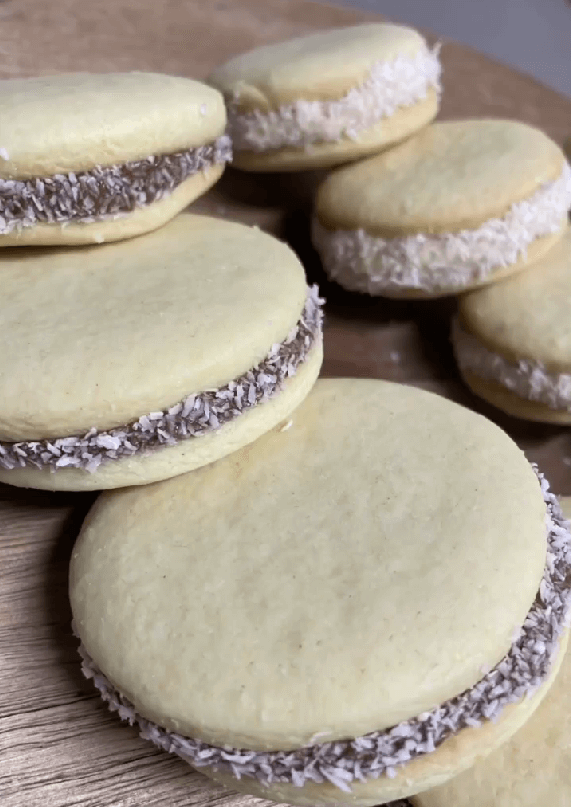
FAQ
How long can homemade alfajores last?
Homemade alfajores, with their delectable combination of buttery crumble, creamy filling, and coconut bliss, can typically last for up to two weeks when stored in an airtight container at room temperature. However, for prolonged freshness, refrigerating them extends their shelf life to about a month. To preserve their exquisite texture and flavor, it’s advisable to keep them away from direct sunlight and moisture. These delightful treats not only satisfy immediate cravings but also offer lasting enjoyment when stored thoughtfully.
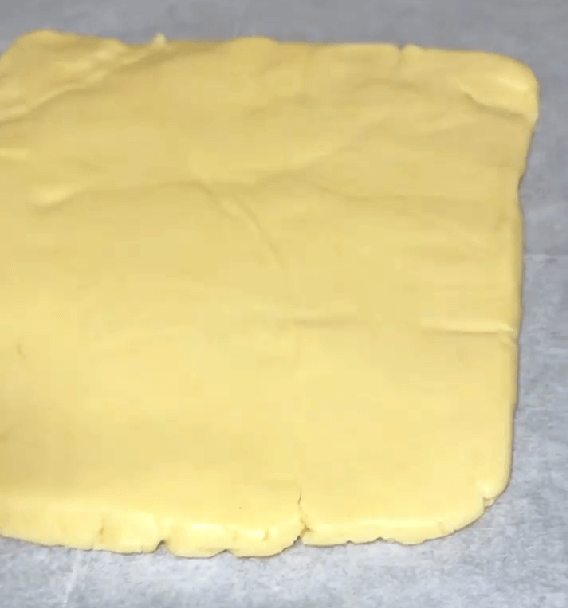
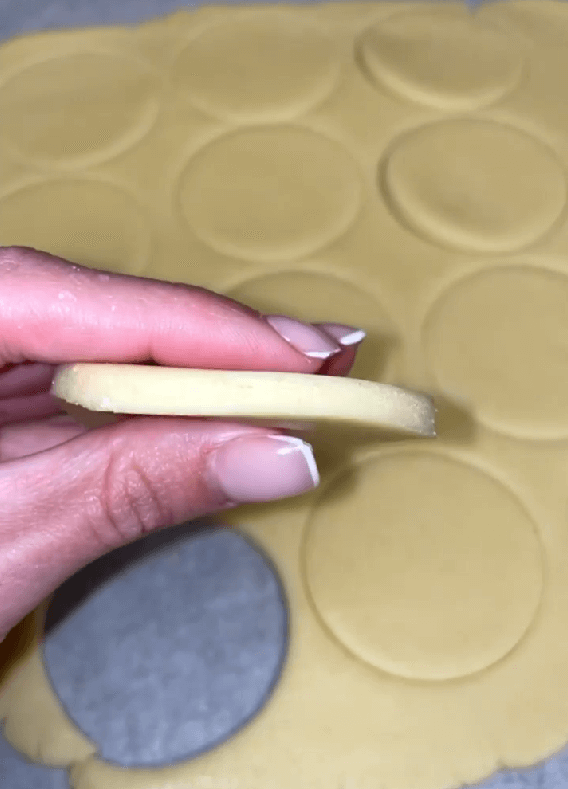

Can I freeze these homemade alfajores?
Certainly! Homemade alfajores can be frozen for future enjoyment. Ensure they are well-wrapped in an airtight container or sealed plastic wrap to prevent freezer burn. When ready to indulge, simply thaw them in the refrigerator to maintain their delightful texture.
What country invented alfajores?
Alfajores trace their origins to Spain, with the name derived from the Arabic word “al-hasú,” meaning filled or stuffed. Introduced to the Iberian Peninsula by the Moors, alfajores evolved over centuries. The concept traveled to South America during the Spanish colonization, particularly becoming a culinary sensation in Argentina. Today, Argentina is renowned for its unique alfajores, featuring delicate layers of crumbly cookies, dulce de leche filling, and coconut coating. While Spain planted the seed, it’s Argentina that nurtured and perfected the alfajor, making it a beloved confection recognized and cherished globally for its delightful taste and cultural significance.
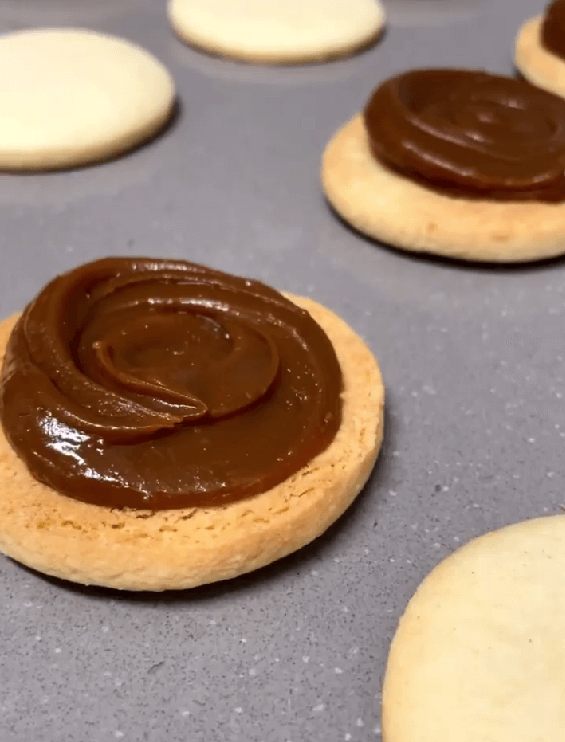
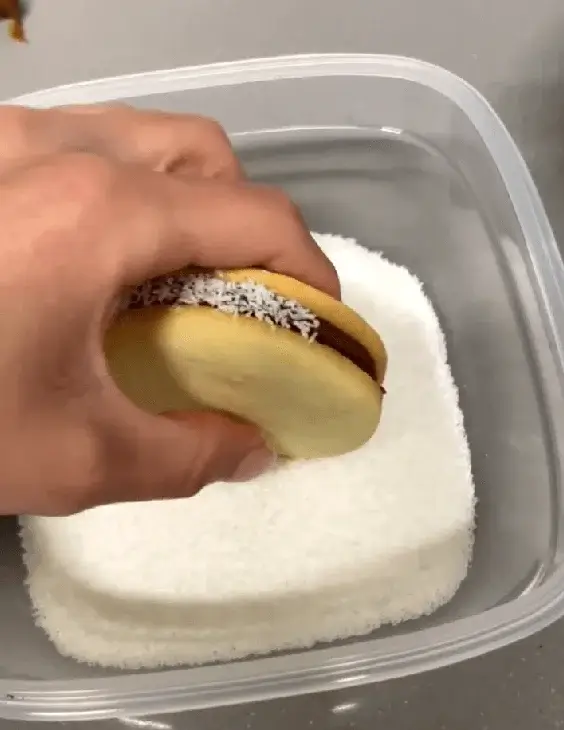
What’s the difference between alfajores and macarons?
Alfajores and macarons are distinct delicacies with different cultural origins and compositions. Alfajores, hailing from Spain and popular in Latin America, consist of two crumbly cookies embracing a creamy filling, often dulce de leche, and coated in coconut or chocolate. Macarons, of French origin, are delicate meringue-based cookies sandwiched with ganache, buttercream, or jam. While alfajores boast a rich, Latin American flair, macarons exude French finesse. Their differences lie not only in taste but in cultural heritage, making each a unique and cherished treat in its own right.
